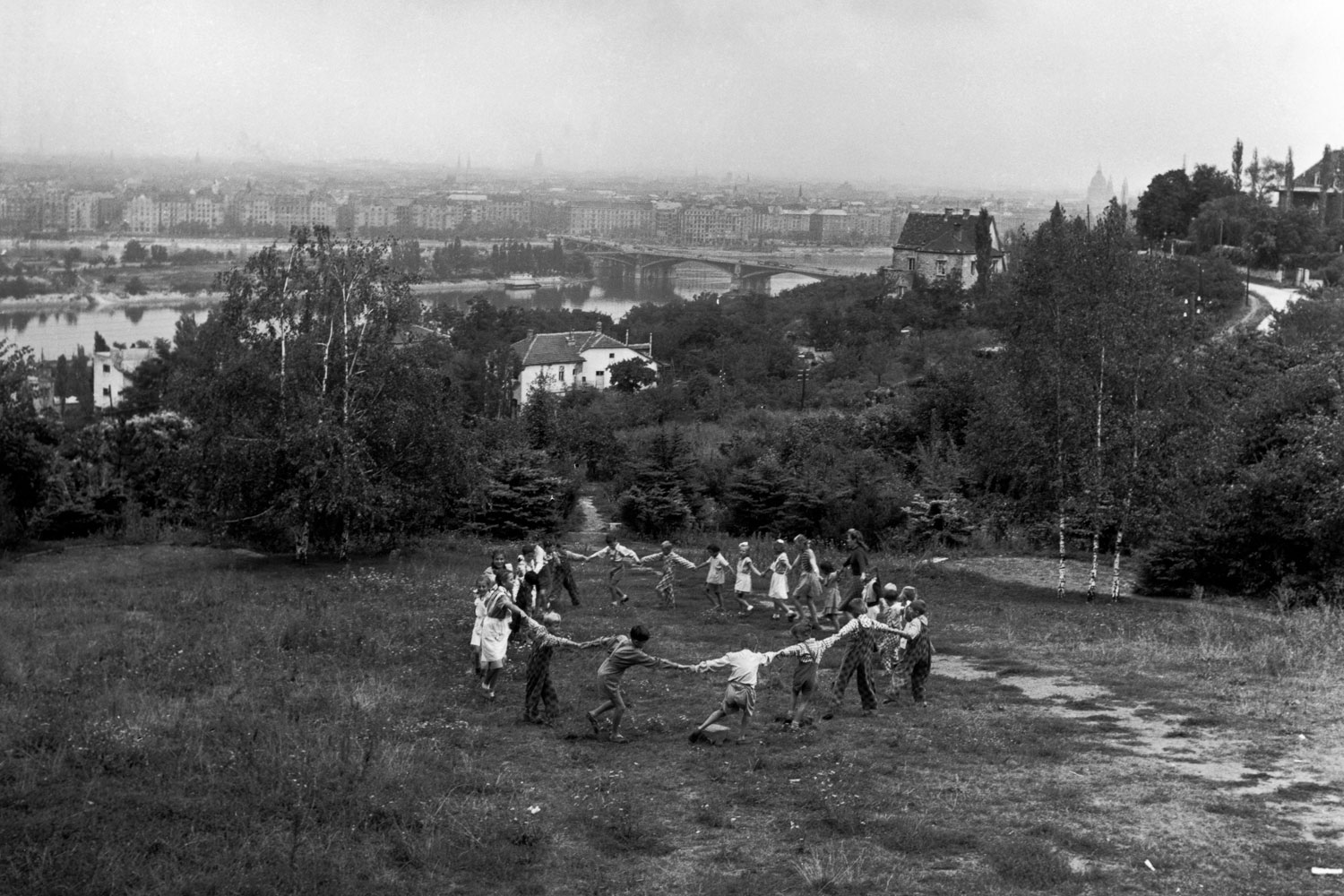
Dawid Szymin, who was born in 1911 to a family of Polish Jewish intellectuals, chose his surname — Chim — in Paris where he started his career as a photojournalist in 1933. Later on he would anglicize his name to David Seymour. Working for the magazine Regards, he became well-known for his reportage on French social life and the beginnings of the Popular Front. But it was his work in the Spanish Civil War, where he authored 30 stories in three years as a special correspondent for Regards, that earned him an international reputation. During World War II he worked as a photo-interpreter, then resumed his photography career in 1947, becoming one of the co-founders of Magnum Photos with Henri Cartier-Bresson, Robert Capa and George Rodger.
In the Spring of 1948, Chim was given a mission by the newly founded UNICEF: report on the fate of the 13 million children across Europe who have been left homeless and/or in dire need by the Second World War, and assess their progress through help that the organization provided in the form of shelter, meals, clothes and vaccinations.
His assignment soon became a labor of love: he worked for six months and shot 257 rolls of film with his Rollei and Leica, accepting a token sum of $2,600 instead of his customary $100 a day fee. From the spring to the fall of 1948, he traveled through five European countries: Austria, Greece, Italy, Hungary and his native Poland.
After he completed the assignment, Chim had little time for editing his contact sheets beyond preparing the book, Children of Europe, which was published by UNESCO in 1949 with fifty-two photographs. He also readied several features, including a story for the UNESCO Courier and one for LIFE magazine.
The pictures published in the original book are often illustrative, showing mainly the situations where UNICEF’s intervention is the most evident. Meals and vaccinations figure prominently, as well as schools and hospitals — they are contrasted with harsh pictures of the children’s situations, such as the juvenile courts, the orphanages, makeshift sleeping conditions, refugee camps from the Greek Civil War, and street life. Images are often symbolic and sentimental, such as a pile of worn shoes or a child with a piece of bread, a group of children holding empty metal cups or waiting open-mouthed for a meal.
In contrast, the second part of the book shows the children taking control of their lives: games, studies, gymnastics, dances, music, cleaning of street rubble and the reconstruction of schools. All in all, the choice of published pictures may have been a compromise between the wishes of Chim and his clients.
Chim died at Suez in 1956. His busy life had not left him time to go back to his contact sheets. Traumatized by a war in which he had lost his parents and friends, he had relocated to Italy and was avoiding the territory of Eastern Europe. Some of his photographs had hit close to home: while in Poland, he had gone to Otwock near Warsaw and found out that the Penzjonat Zacheta, owned by his family, and where he spent his summer holidays as a child, had been transformed into a Jewish orphanage.
( See how Chim’s photographs appeared on the pages of LIFE )
For many years, as is the case for almost every photographer, editors mostly kept republishing the same famous pictures that seemed to epitomize Chim’s success.
Eighteen months ago, I started researching Chim’s archive on the children and was amazed to discover more than 50 never-published images. With a view to publishing a new book, I chose a number of photographs, intense and beautiful in their own ways.
Because so much time had passed since Chim had taken the pictures, it was easier to see them as distinct from his assignment and as related to the rest of his work. There are many quirky photographs, less classically composed and with more ambiguous meanings. They may not illustrate UNICEF’s work directly and thus did not have their place in a UNESCO-produced book, but possess an astonishingly modern resonance.
The problems Chim pointed out in 1948 are still acute. Today, children are still the main casualties of war — maimed, orphaned, and homeless all over the planet, and in even larger numbers than in his time. Chim’s work is a sobering reminder of the plight of the most vulnerable. As his friend Henri Cartier-Bresson said: “At the time, we did not talk about photography: we talked about the world.”
The photographs are Chim’s family album. But the man who loved children would never have any of his own.
An upcoming exhibition at I.C.P. in New York features 150 photographs by Chim taken between 1933 and 1956. Umbrage Editions is also publishing a collection of his work, Children of War. The photos will also be on display at the Howard Greenberg Gallery in New York from Feb. 3 – 23.
A photography historian and poet, Carole Naggar has recently authored an essay on Christer Stromholm in the book Postscriptum (Max Strom, 2012) and one in the ICP Chim catalogue (Prestel, 2013). She is the author of the forthcoming Chim’s Children of War (Umbrage, 2013) and is working on a biography of Chim.
More Must-Reads From TIME
- The 100 Most Influential People of 2024
- The Revolution of Yulia Navalnaya
- 6 Compliments That Land Every Time
- Stop Looking for Your Forever Home
- If You're Dating Right Now , You're Brave: Column
- The AI That Could Heal a Divided Internet
- Fallout Is a Brilliant Model for the Future of Video Game Adaptations
- Want Weekly Recs on What to Watch, Read, and More? Sign Up for Worth Your Time
Contact us at letters@time.com